dewertus
Active member
Historical background
The amount of the materials about the Soviet P-47 is not so high, thus this information about "Jug" service in the Soviet Union is shrouded in mystery. It is known that the Soviets had expressed an interest in P-47 already in 1943. The first three aircraft found their way to Moscow in the same year and have been tested at the VVS and CAGI Institute. Assessment of the P-47 was not clear - an advantage it was long range, payload (larger than the Pe-2 and IL-4 bombers), max ceiling and the speed. The defect was worse maneuverability and ... necessity of another (altogether not "Soviet") approach to pilot and maintenance (which at the realities of the Soviet Union was practically barrier to not possible to overcome). An interesting opinion issued one of the top test pilots VVS M.L.Galle (as with 10 victories having also the combat experience on the Pe-2): "From the first minute flight knew that Thunderbolt is not a fighter. Indeed, it has comfortable and spacious cockpit, but its maneuverability in the level is not acceptable especially vertically - this is the effect of high inertia and mass of the airplane. Thunderbolt is a great plane to fly not require a sharp maneuver, but not for the fighters".
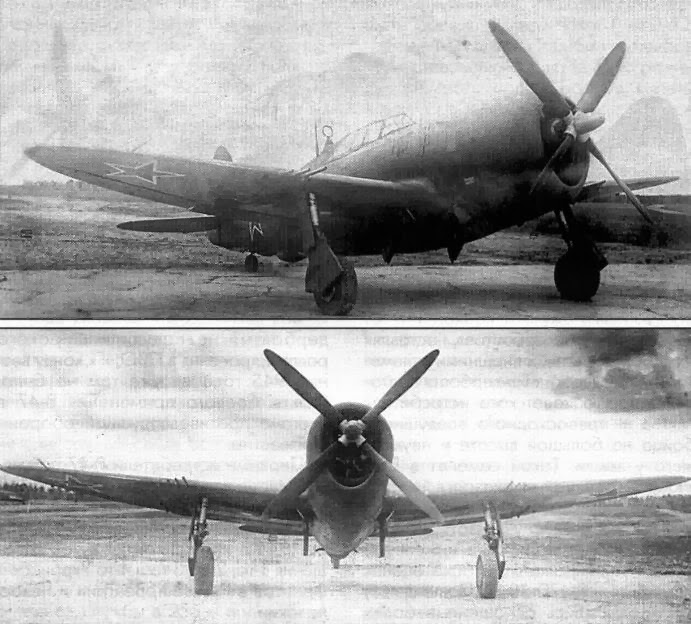
source: http://sovietwarplanes.com
Finally, the VVS had about 200 P-47 in D-22 and D-27 variants. At first P-47 served in Moscow PWO units, but finally Jugs was taken by naval aviation, where their properties (range, speed, payload and armament) have been recognized. The first "marine" unit that received the P-47 was 255 IAP-SF. In aviation fleet P-47 hit also 2 GIAP-SF "Boris Safonov" and 15 ORAP-KBF. A few planes was supposed to be forwarded to the Black Sea Fleet aviation, but there is no information on whether this were.
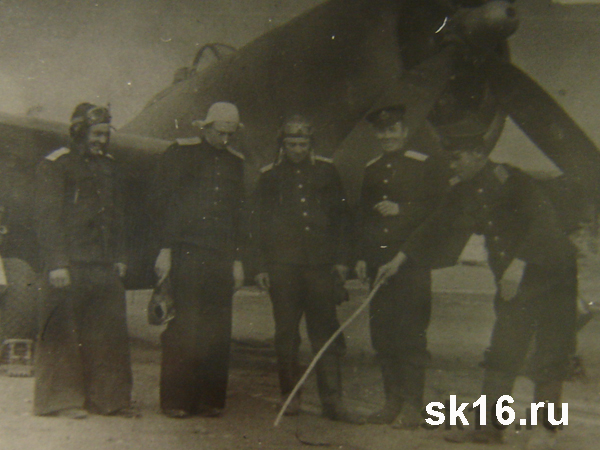
source: http://sk16.ru
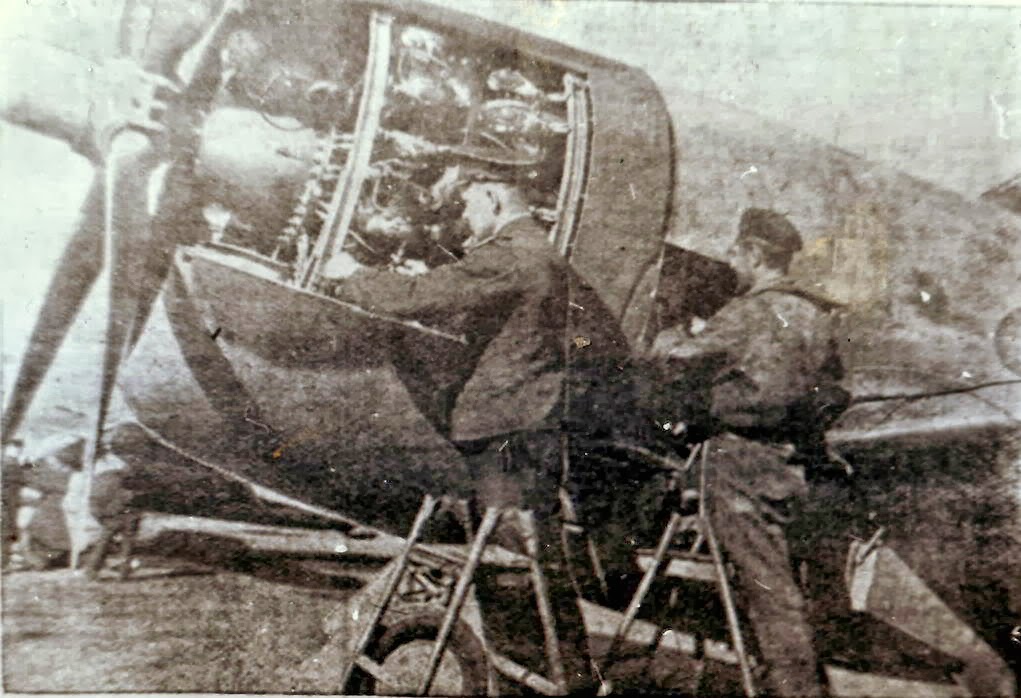
source: http://sovietwarplanes.com
Due to a small amount and the late date of entry of the P-47 to combat their serve also is poorly documented. Northern Fleet Thunderbolts took part in the fighting over northern Finland and Norway in winter 1944-1945 and spring 1945 (reconnaissance and the fight against the enemy fleet), but there is no information about any successes (last victory reported by 255 IAP pilots took place at July 25 1944 (2x FW-190), and so on for nearly a month before the arrival of the first P-47). The Baltic Fleet P-47s were used mainly for reconnaissance and escort of "marine" A-20 Bostons. Immediately after the war, the P-47 had been withdrawn from service with the exception of 255 IAP-SF, where they serve for another year.


Progenitor of the P-47D from 255 IAP-SF, source: http://sovietwarplanes.com
Model
Model I made practically "out of the box" from Aria/Otaki kit. Painting this time I made using Humbrol oil paint: 64(bottom), 117+66(top). Under the ribbon and wash whole model was secured by Agama acrylic varnish. Soiling i made using: MiG Dark Wash(top), MiG Neutral Wash(bottom), Van Ghog oil Raw Umber (exhaust), Van Gogh oil Paynes Grey (guns stains). Scratching done using Humbrol 56 and dry brush technique.







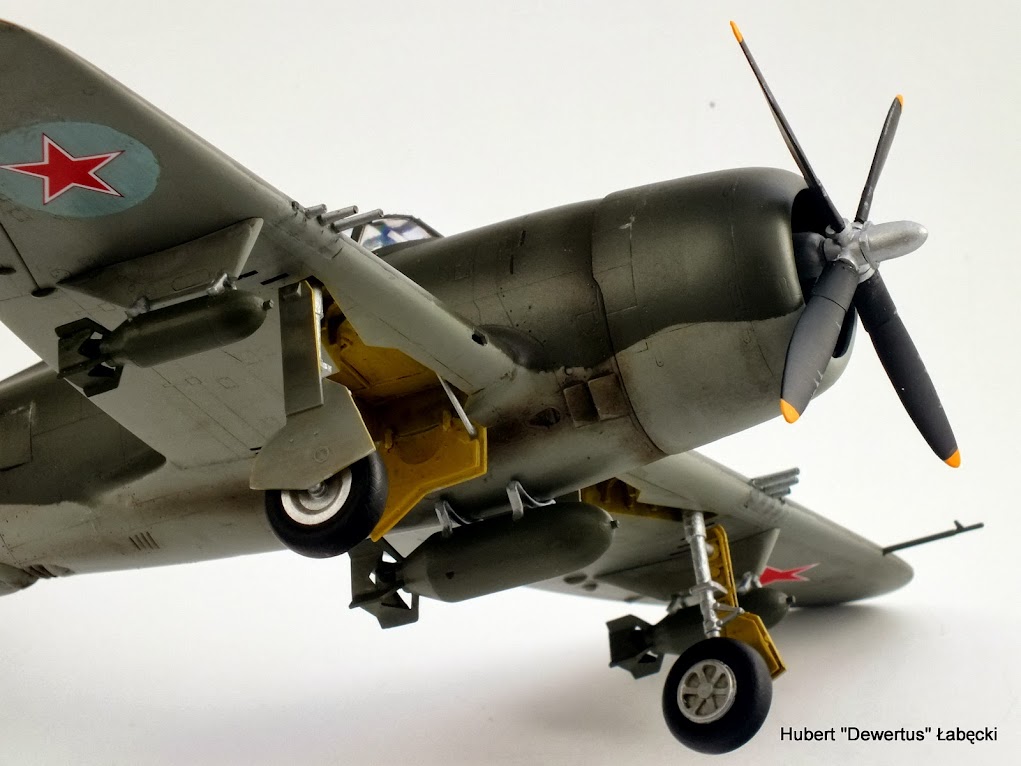
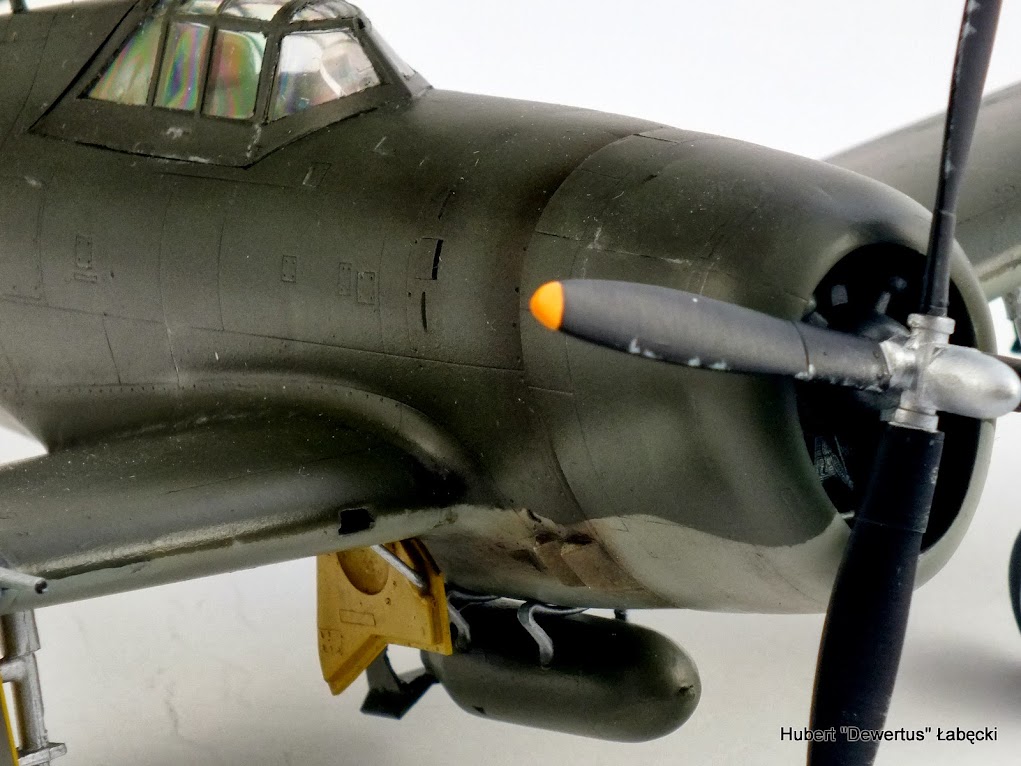

The amount of the materials about the Soviet P-47 is not so high, thus this information about "Jug" service in the Soviet Union is shrouded in mystery. It is known that the Soviets had expressed an interest in P-47 already in 1943. The first three aircraft found their way to Moscow in the same year and have been tested at the VVS and CAGI Institute. Assessment of the P-47 was not clear - an advantage it was long range, payload (larger than the Pe-2 and IL-4 bombers), max ceiling and the speed. The defect was worse maneuverability and ... necessity of another (altogether not "Soviet") approach to pilot and maintenance (which at the realities of the Soviet Union was practically barrier to not possible to overcome). An interesting opinion issued one of the top test pilots VVS M.L.Galle (as with 10 victories having also the combat experience on the Pe-2): "From the first minute flight knew that Thunderbolt is not a fighter. Indeed, it has comfortable and spacious cockpit, but its maneuverability in the level is not acceptable especially vertically - this is the effect of high inertia and mass of the airplane. Thunderbolt is a great plane to fly not require a sharp maneuver, but not for the fighters".

source: http://sovietwarplanes.com
Finally, the VVS had about 200 P-47 in D-22 and D-27 variants. At first P-47 served in Moscow PWO units, but finally Jugs was taken by naval aviation, where their properties (range, speed, payload and armament) have been recognized. The first "marine" unit that received the P-47 was 255 IAP-SF. In aviation fleet P-47 hit also 2 GIAP-SF "Boris Safonov" and 15 ORAP-KBF. A few planes was supposed to be forwarded to the Black Sea Fleet aviation, but there is no information on whether this were.

source: http://sk16.ru

source: http://sovietwarplanes.com
Due to a small amount and the late date of entry of the P-47 to combat their serve also is poorly documented. Northern Fleet Thunderbolts took part in the fighting over northern Finland and Norway in winter 1944-1945 and spring 1945 (reconnaissance and the fight against the enemy fleet), but there is no information about any successes (last victory reported by 255 IAP pilots took place at July 25 1944 (2x FW-190), and so on for nearly a month before the arrival of the first P-47). The Baltic Fleet P-47s were used mainly for reconnaissance and escort of "marine" A-20 Bostons. Immediately after the war, the P-47 had been withdrawn from service with the exception of 255 IAP-SF, where they serve for another year.


Progenitor of the P-47D from 255 IAP-SF, source: http://sovietwarplanes.com
Model
Model I made practically "out of the box" from Aria/Otaki kit. Painting this time I made using Humbrol oil paint: 64(bottom), 117+66(top). Under the ribbon and wash whole model was secured by Agama acrylic varnish. Soiling i made using: MiG Dark Wash(top), MiG Neutral Wash(bottom), Van Ghog oil Raw Umber (exhaust), Van Gogh oil Paynes Grey (guns stains). Scratching done using Humbrol 56 and dry brush technique.

